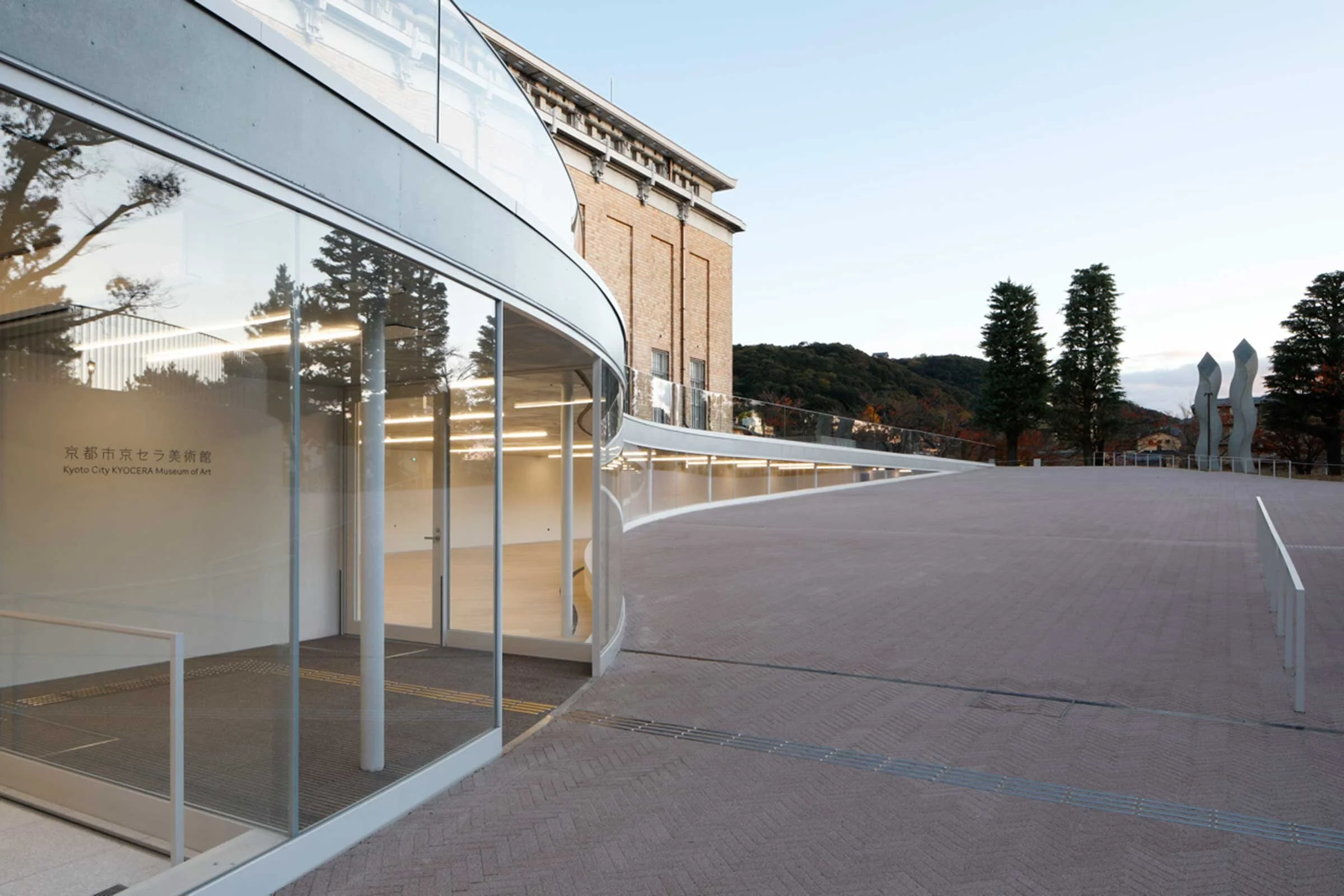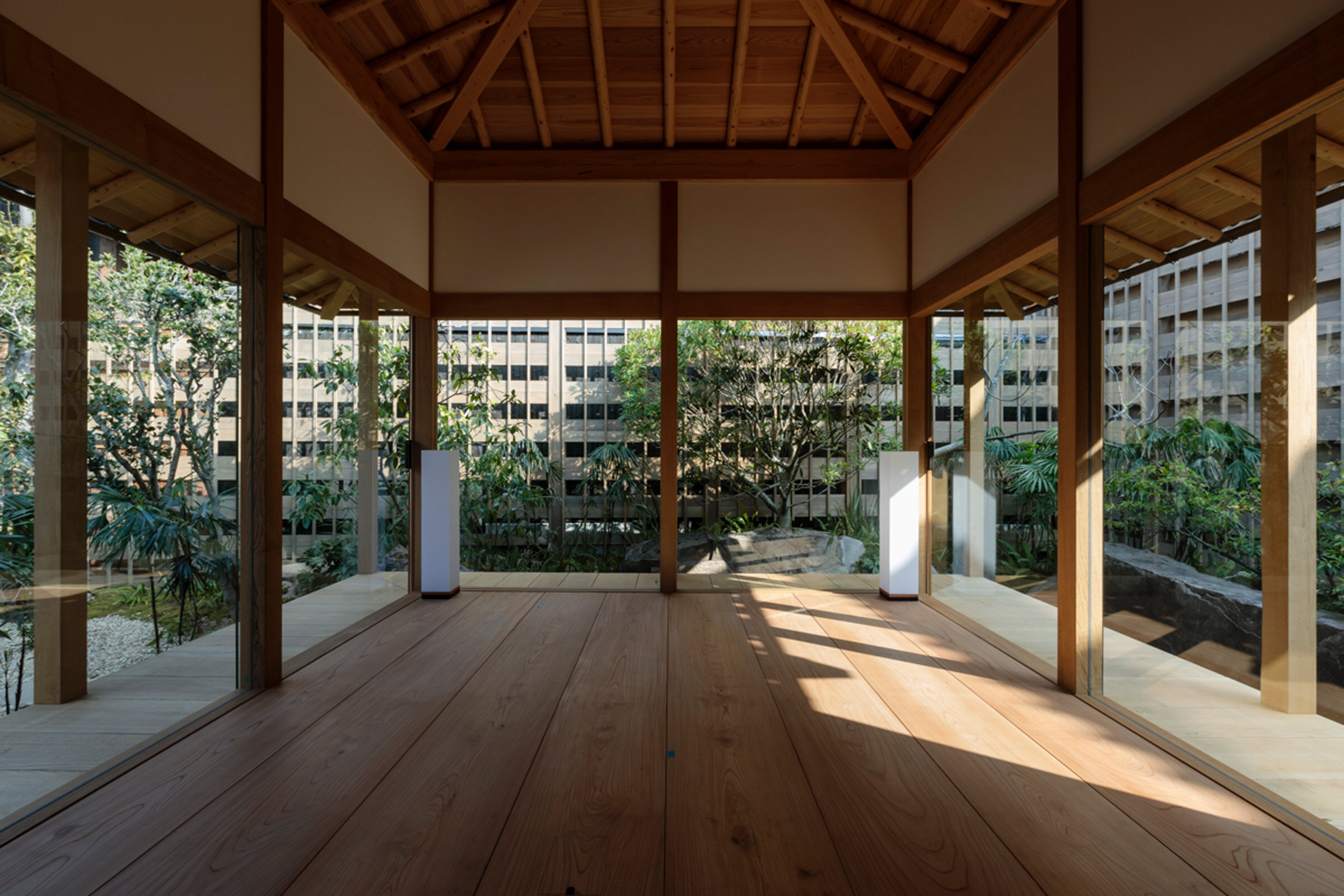A Look Inside the Updated Kyoto City KYOCERA Museum of Art

Due to reopen soon following a major renovation, the Kyoto City KYOCERA Museum of Art balances a raft of contemporary touches with its rich traditional heritage
A flowing facade of transparent ‘ribbon’, a cubed modern gallery and a glass triangle that juts out from the ground may not sound like typical features for a historic Kyoto museum. Yet Kyoto City KYOCERA Museum of Art, set to reopen soon (scheduled for May but subject to change) after a three-year renovation project, respectfully balances a raft of contemporary touches with its rich traditional heritage.
The renovation of one of Japan’s oldest public museums — formerly known as the Kyoto Municipal Museum of Art — was carried out by Japanese architects Jun Aoki, who is also its new director, and Tezzo Nishizawa.
Describing a visit to the original museum five years ago, Aoki says that he ‘could sense that this museum, founded in 1933, was a space adequately suited to contemporary art.’
‘I understood there was no need to change the spatial characteristics of the museum, which had always been “active”, nor a need to change its external appearance, which has lived in people’s memories for many decades,’ he explains. ‘When I was planning the renovation, I decided to proceed with the same style and manner that the museum already had, instead of a new style entirely different from the original one.’
The end result is a smooth marriage of old and new. The building’s original Imperial Crown Style architecture (known as teikan) remains fundamentally intact: a neoclassical brick facade beneath an Eastern-inspired tiled roof, plus rich interior details like tiled floors, stone staircases and marble expanses. But sensitive contemporary touches bring the museum — home to a collection of 3,600 artworks from Kyoto — firmly into the 21st century.
Highlights include a transparent glass ‘ribbon’ that flows organically across the base of the building’s facade, creating a light-flooded entrance area that also houses a cafe and store; the elegant white makeover of the Central Hall, with its high ceilings and spiral staircase; and The Triangle, its glass sides protruding above the ground to form an exhibition space intended for the work of emerging artists.
Perhaps the most ambitious addition, however, is the Higashiyama Cube. A new wing devoted to contemporary art, the clean-cornered building is cocooned in a minimal facade of concrete panels flecked with champagne-gold metal plates, crowned with a roof terrace overlooking the seasonal trees and pond of its Japanese garden. ‘I intentionally designed the Higashiyama Cube so that it appears to be part of the original architecture when viewed from afar, but looks different from the original part when you look closer,’ says Aoki.
Fittingly, exhibitions will range from classic to contemporary; inaugural shows include 250 Years of Kyoto Art Masterpieces and Hiroshi Sugimoto’s atmospheric POST VITAM, with his Glass Tea House Mondrian hovering on the nearby pond.
As Aoki explains, ‘Our intention was to create a space where everyone can enjoy a different experience depending on their preference. We wanted to avoid creating a space that has a single, unequivocal message for visitors.’
Text / Danielle Demetriou
Images / Takeru Koroda
























